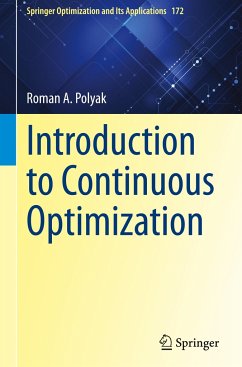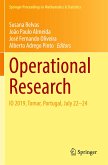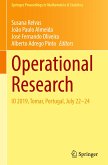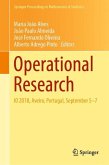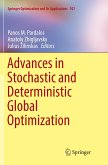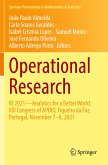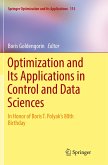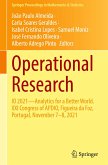This self-contained monograph presents the reader with an authoritative view of Continuous Optimization, an area of mathematical optimization that has experienced major developments during the past 40 years. The book contains results which have not yet been covered in a systematic way as well as a summary of results on NR theory and methods developed over the last several decades. The readership is aimed to graduate students in applied mathematics, computer science, economics, as well as researchers working in optimization and those applying optimization methods for solving real life problems. Sufficient exercises throughout provide graduate students and instructors with practical utility in a two-semester course in Continuous Optimization.
The topical coverage includes interior point methods, self-concordance theory and related complexity issues, first and second order methods with accelerated convergence, nonlinear rescaling (NR) theory and exterior point methods, just to mention a few. The book contains a unified approach to both interior and exterior point methods with emphasis of the crucial duality role. One of the main achievements of the book shows what makes the exterior point methods numerically attractive and why.
The book is composed in five parts. The first part contains the basics of calculus, convex analysis, elements of unconstrained optimization, as well as classical results of linear and convex optimization. The second part contains the basics of self-concordance theory and interior point methods, including complexity results for LP, QP, and QP with quadratic constraint, semidefinite and conic programming. In the third part, the NR and Lagrangian transformation theories are considered and exterior point methods are described. Three important problems in finding equilibrium are considered in the fourth part. In the fifth and final part of the book, several important applications arising in economics, structural optimization, medicine, statistical learning theory, and more, are detailed. Numerical results, obtained by solving a number of real life and test problems, are also provided.
The topical coverage includes interior point methods, self-concordance theory and related complexity issues, first and second order methods with accelerated convergence, nonlinear rescaling (NR) theory and exterior point methods, just to mention a few. The book contains a unified approach to both interior and exterior point methods with emphasis of the crucial duality role. One of the main achievements of the book shows what makes the exterior point methods numerically attractive and why.
The book is composed in five parts. The first part contains the basics of calculus, convex analysis, elements of unconstrained optimization, as well as classical results of linear and convex optimization. The second part contains the basics of self-concordance theory and interior point methods, including complexity results for LP, QP, and QP with quadratic constraint, semidefinite and conic programming. In the third part, the NR and Lagrangian transformation theories are considered and exterior point methods are described. Three important problems in finding equilibrium are considered in the fourth part. In the fifth and final part of the book, several important applications arising in economics, structural optimization, medicine, statistical learning theory, and more, are detailed. Numerical results, obtained by solving a number of real life and test problems, are also provided.
"This book is meant as a textbook for a two-semester course on continuous optimization addressed to students studying mathematics. ... The book may be interesting for readers wanting to learn more about some of the relatively recent achievements in nonlinear continuous optimization that have transformed the field." (Andrzej Stachurski, Mathematical Reviews, April, 2022)
"Throughout the book, the writing style is very clear, compact, self-contained, and easy to follow but at the same time mathematically rigorous. ... This is a well-written book in the field of continuous optimization, and it is strongly recommended to students and researchers ... . The organization and presentation ... make it possible to use it both as a textbook for graduate students and as a reference book. Also, practitioners will find this book as a valuable reference." (Samir Kumar Neogy, zbMATH 1473.90165, 2021)
"Throughout the book, the writing style is very clear, compact, self-contained, and easy to follow but at the same time mathematically rigorous. ... This is a well-written book in the field of continuous optimization, and it is strongly recommended to students and researchers ... . The organization and presentation ... make it possible to use it both as a textbook for graduate students and as a reference book. Also, practitioners will find this book as a valuable reference." (Samir Kumar Neogy, zbMATH 1473.90165, 2021)

